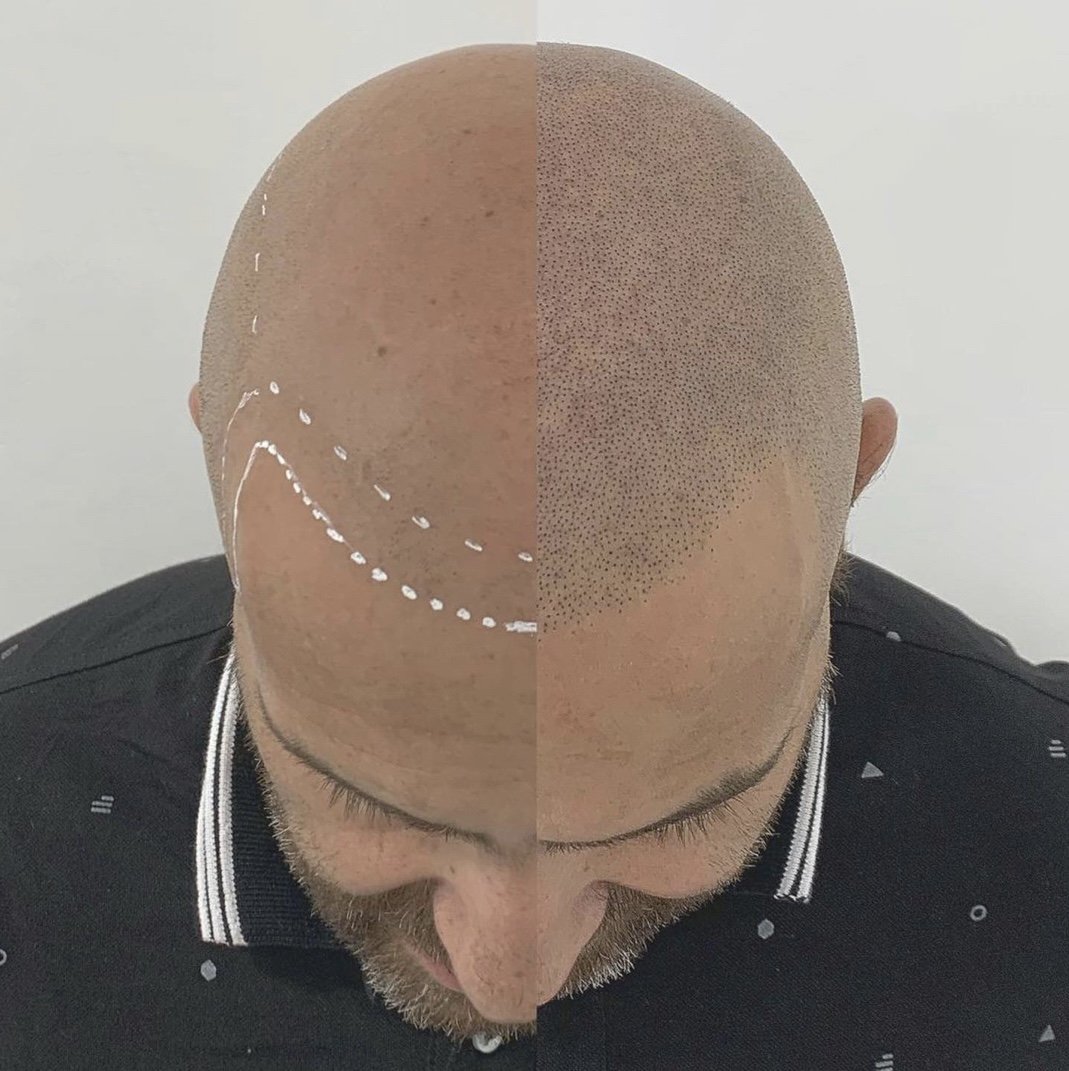Did you know that 30% of dermatology outpatients have psychological or psychiatric disorders?
Did you know that 30% of dermatology outpatients have psychological or psychiatric disorders? Alopecia (hair loss), in turn, is one of the dermatological conditions that can lead to a mental illness. For instance, it can increase one's risk for anxiety, depression, or social phobia.
Even worse, hair loss can occur in males as young as their early 20s. Indeed, 25% of men suffering from male pattern baldness start losing their hair before they hit 21.
Fortunately, hair loss treatments are available, including hair fibers and scalp micropigmentation (SMP).
But what exactly are hair fibers and scalp micropigmentation? What sets the two apart, and why is the latter a better choice in many cases?
This guide covers the crucial facts answering all those questions, so keep reading.
1. What Are Hair Fibers?
Hair fibers (AKA hair-building fibers) are topical products that help conceal hair loss. These are temporary hair loss or hair thinning solutions made of keratin. It's a protein that makes up the structure of the skin, nails, and, yes, the hair.
You can get hair fibers in powder form that you only need to sprinkle on the scalp. Alternatively, you can purchase them in sprays that you spritz on your scalp. They're also available in various shades to match natural hair colors.
2. How Hair Fibers Work
Aside from keratin, hair fibers also contain static electricity charges. These charges enable them to adhere to natural hair.
Each hair fiber has a positive charge that latches on to the natural hair's negative charge. That then causes the hair to look thicker.
As a result, the "thicker" hair fibers can cover a thinning or bald spot on the scalp surrounded by natural hairs. They can also make an otherwise flat or less-bodied crown look more voluminous. And since you can get them in various shades, you can use them to hide graying roots.
3. How SMP Differs From Hair Fibers
Scalp micropigmentation is a non-surgical hair loss treatment involving a tattoo-like process. During the SMP procedure, a trained practitioner injects medical-grade pigments into the scalp. That results in the appearance of a buzz cut or freshly-shaved hair.
SMP doesn't cure hair loss, meaning it won't make your hair grow back. However, because it's technically a tattoo, it provides long-lasting results. Indeed, the full-bodied hairline look it delivers can last a lifetime with proper care.
4. Why SMP Might Be Better Than Hair Fibers
One of the reasons hair fibers are popular is that they're low-cost; the cheapest ones cost only $10 online. That makes them some of the most inexpensive products for concealing thinning hair.
On the other hand, scalp micropigmentation prices range from $2,800 to $4,400. The final cost usually depends on the treatment area's size. So, the larger the scalp that needs SMP, the higher you can expect the bill to be.
Still, SMP offers more benefits that make it (and its price) far more worth it than hair-building fibers.
No Need for Natural Hair
Powder or spray fibers for hair only work if they have natural strands to stick to, so they won't work if no hair remains. In short, they aren't ideal for folks with significant alopecia.
By contrast, scalp micropigmentation doesn't require existing or remaining natural hair. A qualified SMP artist can cover receding hairlines or small to massive bald spots. So whichever stage of the Norwood Scale your hair loss is in, whether stage 1 or 7, you can be a good candidate for SMP.
Longer-Lasting Results
You can say goodbye to the effects of powder or spray hair fibers once you wash your hair. Some lower-end products even disappear when your hair gets rained on or sweaty. Strong winds may also blow off the products' particles.
On the other hand, the ink used in scalp micropigmentation doesn't wash or get blown away. Remember: It's pretty much like a tattoo, so it won't disappear even if you shampoo your scalp and hair.
Do note that the pigments used in SMP can fade, but just like a regular tattoo, it will take a long time before they do. And in cases wherein they start becoming lighter, a qualified SMP artist can touch up the area.
Not as Hassling as Hair Fibers
Many hair fiber brands instruct users to apply the product only on clean, dry hair. That's because moisture impedes the binding process of the fibers with natural hair.
Thus, it's a must to shower and then dry your hair first before you apply hair-building fibers. That can be tedious and time-consuming, especially if you shower or bathe daily.
Likewise, hair fiber manufacturers warn users against swimming if using their products. Swimming, like sweating, showering, and bathing, also washes away the hair-building fibers.
That doesn't mean you don't need to prepare for SMP; you do, such as exfoliate a week and 48 hours before the treatment. Moreover, it would help if you use moisturizers and drink lots of water daily to prep your skin. It's also best you shave your hair to zero on the day of your appointment.
After that, you need to mind some scalp micropigmentation aftercare steps. For instance, it's best to wait for 48 hours before you wash your newly-treated scalp. Another is to limit exercise to prevent excessive sweating for the first four days.
But once your scalp has completely healed, you can resume normal activities. For example, you can go back to doing activities that cause excessive sweating. You can also start swimming again, but wait for at least two weeks before doing so if you've had a density/filler SMP.
So even though SMP has pre- and post-care steps, you only need to do them right before and after the treatment. That's less hassling than hair fibers that require regular applications.
Consider SMP Over Temporary Hair Fibers
And there you have it, the facts you need to know about hair fibers and scalp micropigmentation. Now you know that the former is a cheap yet temporary and tedious hair loss concealment method. However, you also learned that SMP is a much better choice as it delivers long-lasting results.
So, consider SMP if you'd want to invest in a more permanent solution to your hair loss woes.
If you're ready to undergo scalp micropigmentation, we here at Scalp Co. are happy to help.
Call us today for a free consultation.

